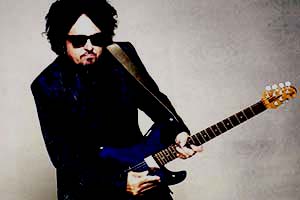For David Paich and Toto Hydra and Turn back represented two further attempts at defining their own musical position more closely. "But it wasn't what we always dreamed of, so on Toto IV we returned to the familiar straightforward rock sound of our debut album." (David Paich)
With unexpected succes. Toto IV (including the international hits Africa and Rosanna won a Grammy award as best production of 1982 and remains a milestone in music history. "We really reached our peak then. That was exactly what we'd been fighting for and everyone understood that." (David Paich)
Jeff Porcaro on the making of Africa (Modern Drummer, August 2002):
"I was about eleven when the New York World's Fair took place, and I went to the African pavilion with my family. I saw the real thing; I don't know what tribe, but there were these drummers playing, and my mind was blown. The thing that blew my mind was that everybody was playing one part. As a little kid in Connecticut, I would see these Puerto Rican and Cuban cats jamming in the park. It was the first time I witnessed somebody playing one beat and not straying from it, like a religious experience, where it gets loud and everyone goes into a trance. I've always dug those kind of orchestras, whether it's a band or all drummers. But I just love a bunch of guys saying one thing. That's why I loved marching bands."
"So when we were doing Africa, I set up a bass drum, snare drum, and high hat, and Lenny Castro set up right in front of me with a conga. We looked at each other and just started playing the basic groove - the bass drum on 1, the '&' of 2, and 3. The backbeat is on 3, so it's a half-time feel, and it's 16th notes on the hi-hat. Lenny started playing a conga pattern. We played for five minutes on tape, no click, no nothing. We just played. And I was singing the bass line for Africa in my mind, so we had a relative tempo."
"Then Lenny and I went into the booth and listened back to the five minutes of the same boring pattern. We picked out the best two bars that we thought were grooving and marked them on the tape. Then we made another mark four bars before. Lenny and I went back out; I had a cowbell, Lenny had a shaker. They gave us two new tracks and then gave us the cue when they saw the first mark go by. Lenny and I started playing to get into the groove, so by the time that fifth bar came - which bars we marked as the cool bars we liked - we were locked, and we overdubbed shaker and cowbell."
"So at that point we had bass drum, snare drum, hi-hat, two congas, a cowbell, and a shaker. We went back in, cut the tape, and made a one-bar loop that went 'round and 'round and 'round. Of course, the Linn machine was available to us, and maybe it would have only taken two minutes to program what we had played into the Linn. But a Linn machine doesn't feel like that! So we had an analog groove."
"We took that tape, transferred it onto another 24-track for six minutes, and David Paich and I went out in the studio. The song started, and I was sitting there with a complete drumset, and Paich was playing. When he got to the fill before the chorus, I started playing, and when the verse or the intro came back, I stopped. Then we had piano and drums on tape."
"You have to realize that there are some odd bars in Africa , so when you have a one-bar loop going, all of a sudden, sometimes Lenny's figure would turn around. So Lenny went in and played the song again, but this time he changed his pattern a little for the turn-arounds, the fills, the bridge, and the solo. We kept his original part and the new one. Then we had to do bongos, jingle sticks, and big shakers doing quarter notes, maybe stacking two tracks of sleigh bells, two tracks of big jingle sticks, and two tracks of tambourines all down to one track. I was trying to get the sounds I would hear Milt Holland or Emil Richards play, or the sounds I would hear in a National Geographic special, or the ones I heard at the New York World's Fair."





